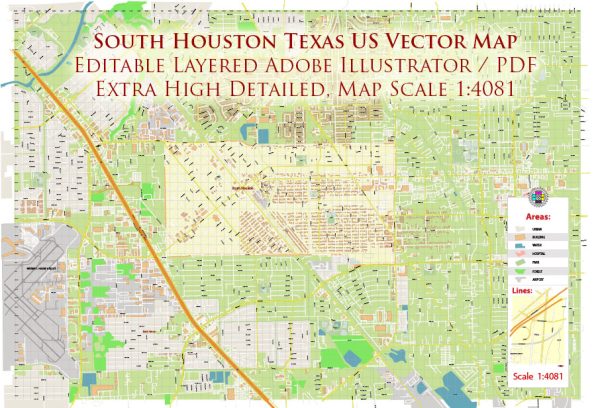South Houston is a city located in the southeastern part of the state of Texas, USA. While South Houston is a relatively small city, it is situated within the broader ecological context of the Gulf Coast region. Here is an ecological description of South Houston and its surrounding environment:
- Climate: South Houston experiences a subtropical climate, characterized by hot and humid summers and mild winters. The region is prone to high levels of precipitation, with the majority of rainfall occurring during the spring and early summer months, often due to the influence of the Gulf of Mexico. This climate is conducive to lush vegetation and a variety of ecosystems.
- Vegetation: The vegetation in and around South Houston is predominantly composed of various types of deciduous and evergreen trees, including oak, pine, and magnolia. Wetland areas and bayous support marsh grasses, cypress trees, and other water-loving plants. The city itself features well-manicured urban landscapes with a mix of native and ornamental plant species.
- Wildlife: The Gulf Coast region is home to a diverse range of wildlife. Common species include white-tailed deer, armadillos, squirrels, and a variety of bird species like cardinals, blue jays, and great egrets. The nearby Gulf of Mexico supports a rich marine ecosystem, including various fish, crabs, and shrimp, making the area attractive to anglers and seafood enthusiasts.
- Waterways: South Houston is situated near the Gulf of Mexico and is crisscrossed by bayous and rivers. The Buffalo Bayou, for example, runs through the area and provides important drainage and habitat for local wildlife. The proximity to the Gulf of Mexico also makes the city susceptible to hurricane and tropical storm events, which can impact the local ecology.
- Urban Development: South Houston is part of the Houston metropolitan area, and like many urban centers, it has seen substantial urban development and infrastructure growth. While urbanization has impacted natural ecosystems, efforts have been made to preserve green spaces, parks, and wetlands to maintain a balance between urban development and the environment.
- Conservation Efforts: Local and state agencies, as well as environmental organizations, work to protect and conserve the natural environment in the region. Efforts include wetland preservation, wildlife conservation, and pollution control to safeguard the ecological integrity of South Houston and its surroundings.
It’s important to note that the specific ecological characteristics of South Houston may vary depending on the exact location within the city and the level of urbanization. While the region faces ecological challenges associated with urban growth, there is also a commitment to preserving the natural environment and its unique features.


 Author: Kirill Shrayber, Ph.D.
Author: Kirill Shrayber, Ph.D.